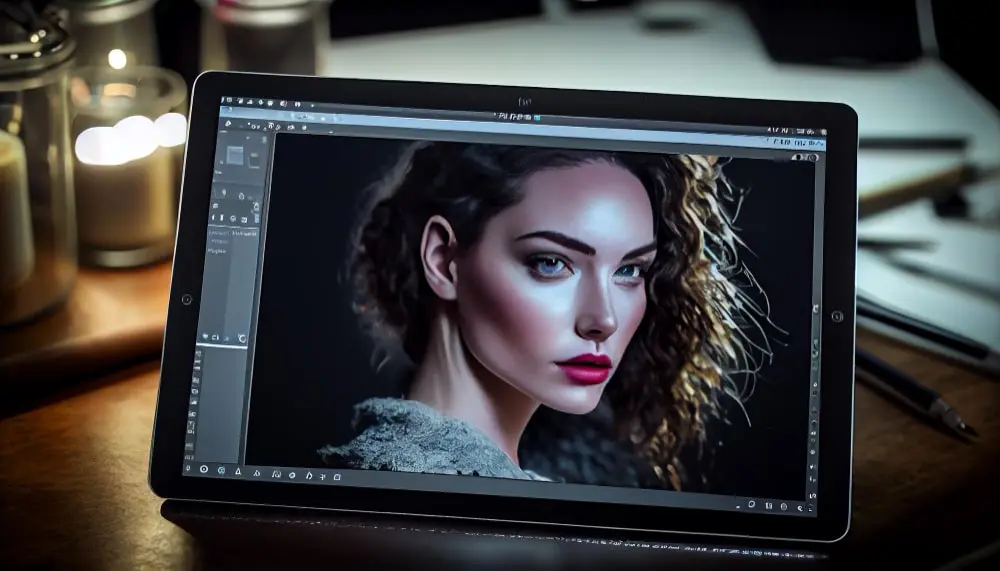In the world of photo use and customization for professional or business purposes, photo editing is an indispensable outlook of visual content. High-quality images prolong your overall application in every sector like websites, marketing materials, or social media.
You can choose any of these in terms of photo editing, in-house editing vs outsourcing. In-house editing contains more control and balanced branding. Besides, this way is costly.
On the other hand, outsourcing offers different skills and scalability. It can be done with communication issues and low-quality oversight. But this way comes cheaper.
Now a confusing question comes to mind which path should you choose?
In this blog, we are going to solve your confusion and make it easy to select the proper editing style for your business.
The included pros and cons of in-house and outsourcing photo editing will help you choose the best option.
The Importance of Photo Editing
In marketing, website, social media, or wherever in the business sector, good outcomes lie in proper photo editing. So photo editing is crucial in many ways.
There are different types of photo editing such as product photo editing, car photo editing, etc. Before we start our elaboration on the topic, we are including some facts about the importance of photo editing.
- Professionalism: Polished and clean images highlight professionalism and boost brand image.
- Consistency: Identical editing maintains a compatible look over all platforms.
- Audience Engagement: High-quality photos contain eye-soothing sight. These capture and retain the attention of the audience.
Understanding In-House Photo Editing

In-house photo editing refers to having an internal team. They handle all the editing tasks. In-house editing offers instant availability, easy cooperation, and good brand consistency. This option is preferable for frequent, high-volume customizing needs and huge-budget businesses.
Here are the benefits and drawbacks:
Advantages
- Immediate Availability: Editors are kept available anytime for urgent edits. Besides, quick turnaround times are achievable.
- Brand Familiarity: In-house editors understand your brand’s style. They ensure the coherent application of brand guidelines.
- Direct Collaboration: In-house editing covers easy communication with photographers and other team members. You will get real-time feedback and adjustments.
- Higher Control: It empowers the full control over the editing process. Also, in this term, it is easier to enforce quality standards and security protocols.
Disadvantages
- High Cost: The editors’ salaries, benefits, and other overheads can be a bit expensive. You have to gather the equipment and get a software license. This will increase your cost.
- Limited Expertise: The skill set might be a limited edition to in-house talent. A team may have a lack of specialized knowledge for specific tasks.
- Scalability Issues: It can be tough to scale up quickly for a large project. Also, the risk of bottlenecks exists during high-demand periods.
Understanding Outsourcing Photo Editing

When you hire external professionals or a team to make your image great by editing tasks, that is called outsourcing photo editing. Commonly they are hired to handle photo retouching and enhancement of the photos for business.
Some of the tasks can be portrait retouching services, another one is jewelry retouching, body retouching, etc.
Here is the breakdown of the pros and cons:
Advantages
- Cost-Effective: You just have to pay only for the services you need. It can be an HDR blending service, background removal editing, real-estate photo editing service, etc. Also, you don’t have to invest money in in-house salaries or software.
- Access to Expertise: You will benefit from a wide range of skills from external professionals across different industries.
Because they master editing skills with photography to provide exceptional services. Such as ghost mannequin service, jewelry retouching service, etc.
Besides, they often have more advanced tools and techniques than the in-house. With
these, they can make the images very optimized.
- Scalability: With outer professionals, you can easily scale up or down based on your project volume. You also have flexible options to match your expectations.
- Focus on Core Activities: Hiring professionals from outside frees up time for your team. By this, your team gets opportunities to focus on core business activities. This also allows you to moderate and concentrate on strategy and execution.
Disadvantages
- Communication Barriers: Communication continues episodic and potentially delayed in outsourcing way. Sometimes it takes time to complete the alignment on specification.
- Less Control: As the tasks are completely handed over to the outer professionals, you will have limited oversight over the editing process. The quality and consistency of the work may differ if all the processes don’t go properly.
- Security Concerns: There is a risk of data breaches and confidentiality issues as the hired one remains unknown. The sensitive photos of your business might be exposed to third parties by them.
Comparison Table: In-House Photo Editing vs. Outsourcing
Here is a comparison table between in-house photo editing and outsourcing. This summary will give a clear understanding of choosing any of them.
| Feature | In-House Photo Editing | Outsourcing Photo Editing |
| Cost | High (benefits, overhead, salaries) | Basically lower, pay-per-task rule |
| Expertise | Limited to in-house talent | Wide range of specializations |
| Scalability | Troublesome and slow | Easy and flexible |
| Consistency | High (familiar with the brand) | Can vary, depending on the agency |
| Control | Unlimited | Limited |
| Communication | Easier | Potential barrier |
| Security | Highly focused on internal security | Risk of breaches and confidential issues |
In-House Editing vs Outsourcing – Key Factors to Consider
When you choose between in-house photo editing and outsourcing, you have to consider some key factors that can influence your business. Consider the following factors given below:
- Budget: Evaluate the financial impacts of both options. The large project requires a long period with high costs. Besides, small project demands low costs with a short time length.
- Volume of Work: Consider the frequency and quantity of editing tasks. The high volume of tasks fits with an in-house team.
- Expertise Requirements: Determine the level of expertise your projects of work need. Specialized work might benefit more from outsourcing.
- Quality Control: Evaluate how captious coherent quality is for your brand. Decide on the level of control you want over the editing process with any of those two options.
- Time Sensitivity: Try to consider the importance of quick turnarounds. In-house photo editing terms are more responsive often.
- Flexibility: Evaluate if your workload becomes agitated. Outsourcing photo editing way offers flexibility to scale up or down.
Case Studies
Let’s explore some practical examples. These will guide you in your decision-making process.
- Small Businesses: Mostly keep on outsourcing due to limited budgets and rippling workloads. This option allows you to access professional editing skills without the overheads.
- Large Enterprises: In-house editing procedures are more efficient for a high and consistent volume of editing tasks. This step provides control and ensures brand consistency.
- E-commerce Companies: Necessarily, rapid and high-volume edits are required for product images. You can choose a hybrid option. For routine tasks, you may follow in-house editing. For large projects, outsourcing is the best.
Making the Decision
It is pivotal to choosing between in-house photo editing and outsourcing. It is the best option to choose any of them or both according to your demands. Here are some steps that will help you to make a qualified decision.
- Evaluate Your Needs
- Identify the difficulty and amount of your photo editing services.
- Fix your mind about if your needs are compatible or variable.
- Conduct a Cost-Benefit Analysis
- Analyze and compare the costs of both options. Consider all overheads and hidden expenses on your tasks.
- Evaluate the benefits of each option. The benefits that bring in terms of quality and expertise.
- Consider Long-Term Implications
- Observe your current work condition and think about future growth. Will your editing demand increase?
- Factor in scalability and flexibility in your decision.
- Pilot Test
- If you hesitate and can’t take any decision, run a pilot test. Try outsourcing a project while continuing some in-house tasks. Then evaluate the performance, quality, and cost.
- Seek Feedback
- Accumulate feedback from stakeholders or partners and team members involved in the photo editing process.
- Understand and assess their favors, inconveniences, and pain points.
Frequently Asked Questions
What are the principal benefits of in-house photo editing?
Offers, consistency, and quick turnaround times.
Which option is more cost-effective?
Outsourcing is more cost-effective. It can reduce and provide flexibility.
Can outsourcing match my brand’s?
Most services strive to align with your brand guidelines provided.
How do choose between in-house and outsourcing?
By evaluating the needs, budget, and long-term goals for an informed decision.
Conclusion
In-house photo editing and outsourcing both offer individual advantages and drawbacks. The best option lies in your business’s unique requirements, budget, and long-term goals.
The in-house photo editing sector offers greater control and brand consistency. But it comes with a higher cost. Outsourcing, the other alternative, provides entrances to different expertise and scalability. Also, often comes with a lower cost but with less control.
Carefully measure all the factors mentioned in this article. All of these are to make you make a well-informed decision. Professionalism and efficiency are the keys in terms of photo editing. Whether you do it in-house or outsource, both need proficiency. Proper photo editing ensures the best visual representation.






















